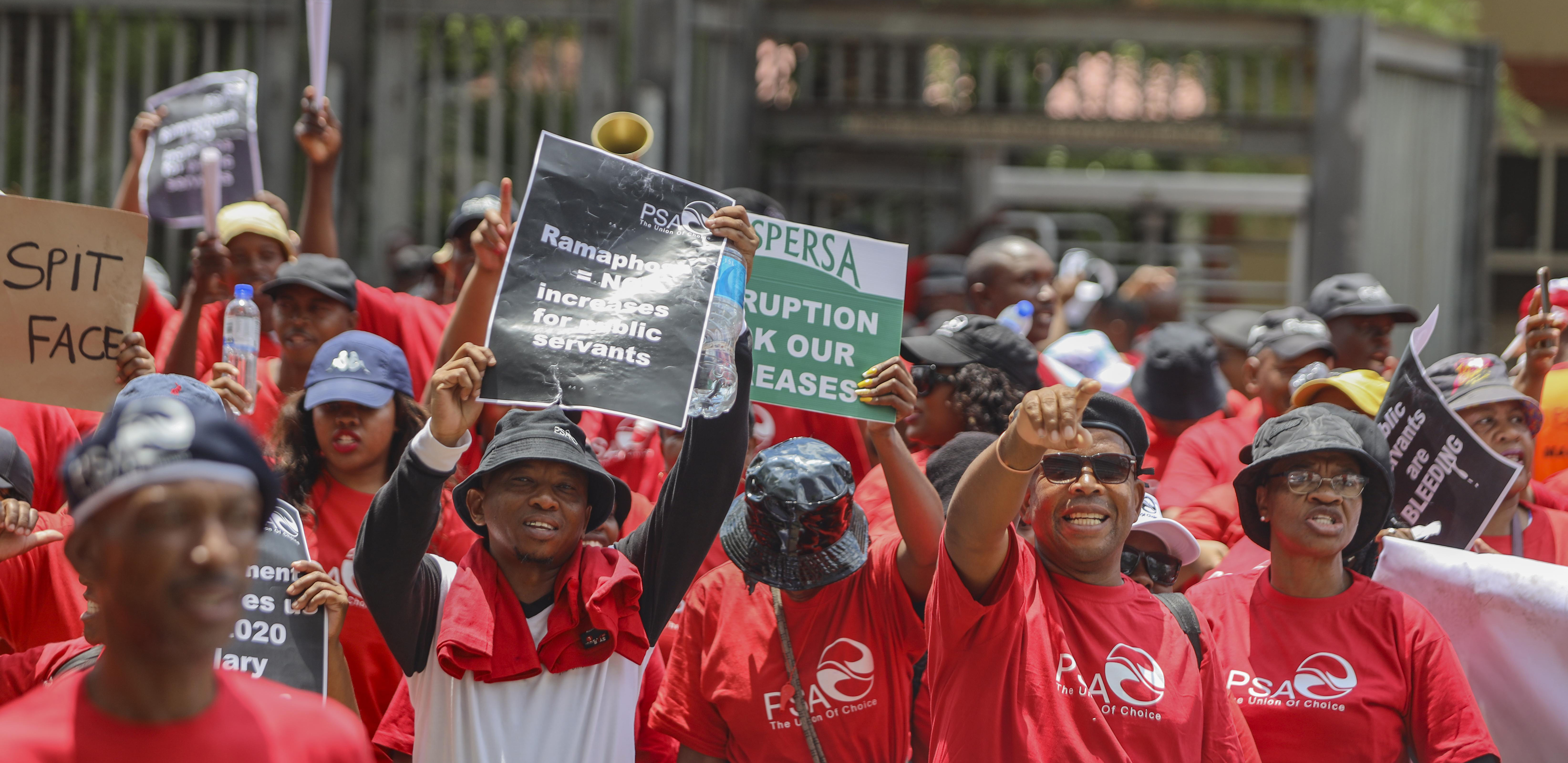At a time when relations between the ANC and DA in the Government of National Unity (GNU) are strained, with the Expropriation Act being the latest political landmine, relations in another area of the state are improving.
It’s an improvement that hasn’t been seen since 2020 and could mark a positive turnaround for South Africa’s public finances and, in turn, the economy and investor sentiment.
For the first time in nearly five years, trade unions representing South Africa’s 1.3 million public servants and the government are set to conclude a pay rise deal for 2025/26 before the start of the new fiscal year on Tuesday, 1 April 2025. Most trade unions representing public servants are warming up to the government’s final offer of increasing their pay by 5%, which is close to their demand of 6%. A compromise for unions — including the Public Servants’ Association (PSA), Solidarity and others affiliated with Cosatu — would be to accept a sweetened offer of 5.5%.
Reuben Maleka, the general manager of the PSA, which claims to represent more than 245,000 public servants, tells me that its members are “willing to accept the draft offer on the table [of 5%]”.
This is significant.
Pay deal
A pay deal might be concluded before the end of January, giving National Treasury the time and space to find ways of funding it, either from existing public resources or raising money in debt capital markets. The exact cost of the 5% or 5.5% pay rise is unknown, but Treasury has provisioned for the total cost of paying public servants to be R798.3-billion in 2025/26.
The exact details will be unveiled by Finance Minister Enoch Godongwana in his Budget next month.
In previous years, trade unions and the government failed to find each other expeditiously on a pay rise deal, resulting in strike threats and negotiations being protracted beyond the start of the new fiscal year. This put public finances on a dangerous path of uncertainty, considering that the new cost of remunerating public servants was unknown in the absence of a confirmed percentage increase in pay.
Labour relations between trade unions and the government soured intensely from February 2020 when former finance minister Tito Mboweni reneged on the third year of an existing pay agreement. The agreement would have given public servants an increase of the prevailing consumer inflation rate at the time, plus 2%. Mboweni also forged ahead with a three-year pay freeze for public servants to cut government expenditure and ballooning debt.
After all, at more than R600-billion, the cost to pay public servants every fiscal year is the largest component of government expenditure. It has crowded out spending on goods and services in hospitals, schools and police stations, and gobbled budgets for pro-growth infrastructure projects. Economists and credit rating agencies have also taken a dim view of South Africa and its prospects because of above-inflation growth in the public sector remuneration.
Since Mboweni’s bold move, the government has held the line and doubled down on its promise not to award public servants inflation-beating pay increases. This has resulted in a breakdown in the relationship between the government, public servants and their trade unions, creating a large trust deficit.
The relationship had gone awry to the extent that public servants embarked on a one-day strike in November 2022 — the first industrial action in the public sector in 12 years.
Labour relations improving
However, there is a sign that labour relations between trade unions and the government are improving. The unions themselves say their relationship with the employer (the state) has improved. This boils down to two factors.
First, several trade union players say there has been a drastic improvement in the negotiation tactic used by state negotiators at the Public Service Co-ordinating Bargaining Council, where the terms of employment in the public sector are negotiated.
How it previously worked is that negotiators representing the Department of Public Service and Administration, responsible for employment conditions in the public sector, would lead negotiations with trade unions at the bargaining council, excluding Treasury in the process. The department would often clinch unaffordable pay deals with trade unions, leaving Treasury to scramble for money to fund them.
Treasury is now included in the bargaining council discussions and is vocal, allowing it to play open cards about public finances and affordability. This has also helped trade unions to moderate their pay expectations.
Second, the negotiating power of trade unions has weakened.
Public servants don’t have an appetite to embark on a prolonged strike because of financial hardships caused by the cost of living crisis. If they embark on a strike, they lose out on wages during the strike because their employer implements a “no work, no pay” policy.
A 2022 ruling from the Constitutional Court on collective bargaining has also weakened the negotiating power of trade unions. The ruling reinforced the government’s powers and discretion to enter into collective wage agreements or renege on them when it can no longer afford to do so.
Either way, it’s encouraging that cool heads have prevailed around public sector negotiations and pay. DM





